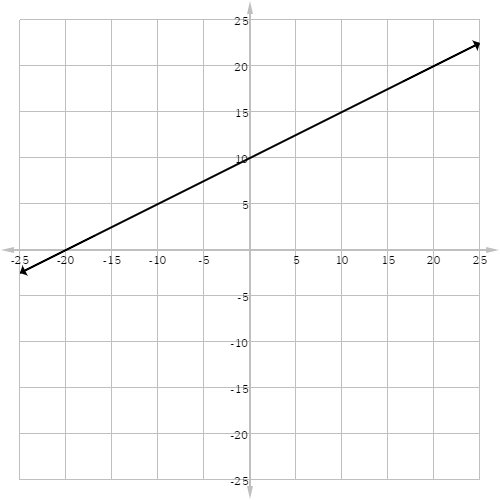This page is part of my unofficial solutions manual to the GRE Paper Practice Book (2e), a free resource available on the ETS website. They publish the questions; I explain the answers. If you haven’t worked through the Practice Book, give Section 5 a shot before reading this!
5.7: The Cartesian Plane
Like many coordinate-plane problems on the GRE, this question allows us to choose from multiple methods of solution. Our task, in any case, is to solve for a and b so that we can compare them. However, we can think of that task in at least two different ways:
- finding the value of variables in an equation (“the algebra way”)
- finding the coordinates of points on a line (“the geometry way”)
The wording of the problem (“xy-plane,” “points,” “line”) strongly encourages us to take the latter approach. In fact, most of my students start by sketching out x- and y- axes and plotting the line. This is not a bad approach: if you draw your graph carefully, you will be able to read off the values of a and b directly. Once you get the hang of it, though, it’s much faster to solve this problem algebraically.
Finding the Value of a
The key is to translate the geometric description of a line into an algebraic description of an equation. The problem begins with a geometric statement:
“the point (a, 0) is on the line”
The equivalent algebraic statement is this:
“The equation is true when x = a and y = 0.”
Or even more simply:
“When x = a, y = 0.”
To find a, then, we take the equation and
- replace x with a
- replace y with 0
This gives us the following:
From there, we solve for a:
Finding the Value of b
Similarly, we can translate the geometric statement
“the point (0, b) is on the line”
as an algebraic statement:
“The equation is true when x = 0 and y = b.”
Plugging in those values for x and y gives us the following:
As before, we simplify to solve for b:
Putting It All Together
Now that we know the values of a and b, all that’s left is to compare the two: a (Qty. A) is negative, and b (Qty. B) is positive, so Quantity B has to be the larger number. We select answer (B) to reflect this fact.
Graphing the line only serves to confirm what we found out algebraically:
Namely, a is the x-intercept of the line, and its value is -20; b is the y-intercept, and its value is 10. On the GRE, however, sketching out a Cartesian plane should be your last resort. Drawing a graph, even a simple one, can easily add a minute to your solve time, and it doesn’t tell you anything you can’t find out using algebra. I know from experience that many students find diagrams more reassuring and intuitive than equations. To do well on the GRE math section, though, you will need to break out of this comfort zone. Diagrams have their place as a tool for for solving problems, but they are “time expensive” and shouldn’t be used to check your work.
Math Review Reference
For more on this topic, see the following sections of the GRE Math Review:
- 2.8: Coordinate Geometry (pp. 30-36)
- 2.9: Graphs of Functions (pp. 36-39)
